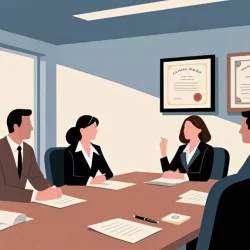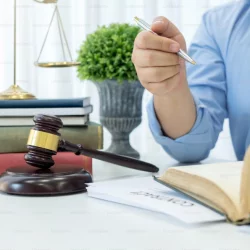Legal Restoration: Crafting Your Case After Injury
A personal injury shatters the mirror of normalcy. It isn't just about broken bones; it's about the fractured reflection of a life unexpectedly altered. The immediate aftermath isn't a checklist; it's a chaotic scramble to grasp the new reality. Medical bills pile up, work becomes a distant memory, and the future, once clear, blurs into uncertainty. It's a disorienting experience, like waking up in a foreign land without a map. Consequently, the search for legal restoration becomes a quest to piece together those shattered fragments, to find a way to rebuild a semblance of the life that was lost. This disorientation isn't merely a temporary state; it becomes a constant companion, a nagging reminder of the life that was, and the life that now is. The familiar routines, the simple pleasures, the very essence of daily existence, all become tainted with the shadow of the injury. The world, once a comfortable and predictable place, now feels unpredictable and unsafe.
Moreover, the emotional landscape is a minefield. The pain is not just physical; it's a deep-seated ache that seeps into every aspect of life. Anxiety gnaws at the edges of every thought, fear whispers doubts about the future, and anger boils at the injustice of it all. Thus, the legal process is not just about dollars and cents; it's about validating those emotions, about acknowledging the profound disruption to one's sense of self. Therefore, the goal is not merely compensation, but a restoration of dignity and a sense of control over a life that has been forcibly derailed. The emotional scars run deep, often deeper than the physical ones. The sense of vulnerability, the feeling of being violated, the loss of trust in the world – these are the intangible wounds that legal restoration seeks to address. It's about reclaiming a sense of agency, about asserting that one's pain and suffering matter.
The Silent Witness: Building a Narrative of Loss
According to accidentlawelite.com, crafting a personal injury case is like writing a story, a narrative of loss and recovery. Therefore, it’s not just about gathering documents; it’s about becoming a silent witness to your own experience. Every medical record, every police report, every witness statement is a chapter in this story. Moreover, the details matter – the way the light fell on the accident scene, the tremor in your voice when describing the pain, the way your child's drawing reflects the change in your ability to play. These are the elements that bring the story to life. This narrative is not a cold, clinical recitation of facts; it’s a human story, filled with emotion, pain, and resilience. It's about showing the judge or jury the true impact of the injury, not just on your body, but on your entire life.
Additionally, the emotional impact is a crucial part of this narrative. Thus, journaling your experiences, recording the changes in your daily life, and documenting the emotional toll can be powerful evidence. This is not about fabricating a story, but about capturing the raw, unfiltered truth of your experience, a truth that can resonate with a judge or jury. The small, seemingly insignificant details can often be the most powerful. The way you struggle to lift your child, the sleepless nights filled with pain, the constant fear that you will never fully recover – these are the moments that bring the narrative to life and make it real.
The Unseen Hand: Unraveling the Web of Responsibility
Liability is not a simple equation; it's a complex web of responsibility. In essence, it's about tracing the unseen hand that caused the injury. This requires more than just pointing fingers; it demands a deep dive into the circumstances, a meticulous examination of the chain of events. Moreover, it's about understanding the subtle nuances of negligence, the hidden factors that contributed to the accident. This investigation is not just about assigning blame; it’s about understanding the root causes of the injury, the systemic failures that allowed it to happen. It's about holding those responsible accountable, not just for the immediate harm, but for the ripple effects that extend far beyond the accident scene.
Furthermore, it’s about challenging assumptions and questioning the accepted narrative. Thus, it might involve uncovering hidden safety violations, exposing corporate negligence, or challenging the conventional wisdom surrounding the accident. This unraveling of the web of responsibility is not just about assigning blame; it’s about seeking accountability and preventing future harm. It's about creating a safer world, where others are not forced to endure the same pain and suffering.
The Compass of Counsel: Finding Direction in the Legal Maze
The legal process is a maze, a labyrinth of rules and procedures. Therefore, seeking legal counsel is like finding a compass, a guide to help you navigate this unfamiliar terrain. A good attorney is not just a legal expert; they are a confidant, a sounding board, a source of support. Moreover, they understand the emotional toll of the injury and can provide empathy and understanding. This relationship is not just a business transaction; it’s a partnership, a collaboration. It’s about building trust, knowing that someone is on your side, fighting for your rights.
Additionally, they act as a shield, protecting you from the complexities and potential pitfalls of the legal system. Thus, they allow you to focus on your recovery, knowing that your rights are being protected. This guidance, then, is not just about legal strategy; it’s about restoring a sense of control and empowering you to reclaim your life. It’s about having someone to lean on, someone who can help you make sense of the chaos and find a way forward.
The Ledger of Loss: Quantifying the Immeasurable
Quantifying the immeasurable is the challenge of a personal injury case. It’s not just about adding up medical bills; it’s about calculating the cost of lost dreams, the value of diminished joy, the weight of enduring pain. Therefore, it requires a nuanced approach, one that goes beyond simple economic calculations. Moreover, it involves capturing the intangible aspects of loss, the things that cannot be easily measured. This process is not about putting a price tag on pain; it’s about acknowledging the profound impact that the injury has had on your life, your relationships, your sense of self.
Furthermore, it’s about presenting a compelling case that resonates with human experience. Thus, expert testimony, personal anecdotes, and visual aids can help illustrate the true impact of the injury. This ledger of loss, then, is not just about numbers; it’s about telling a story that captures the full extent of your suffering. It’s about making the invisible visible, about showing the world the true cost of negligence.
Legal Restoration: Reclaiming the Narrative of Your Life
Ultimately, legal restoration is about reclaiming the narrative of your life. It’s about taking back control from those who have caused you harm. Therefore, it’s about seeking justice, not just for the money, but for the validation it provides. Moreover, it’s about finding a way to move forward, to rebuild a life that has been irrevocably changed. This journey is not about erasing the past; it’s about creating a future, a future where you are not defined by your injury. It’s about finding a way to live with purpose and dignity, despite the challenges you have faced.
In conclusion, crafting a personal injury case is not just a legal process; it’s a journey of healing and empowerment. It’s about telling your story, seeking accountability, and reclaiming your future. Thus, by seeking legal restoration, you are not just seeking compensation; you are seeking to rewrite the ending of a story that was not of your choosing. It’s about finding closure, about finding peace, about finding a way to live again.
More to Read:
Previous Posts:










